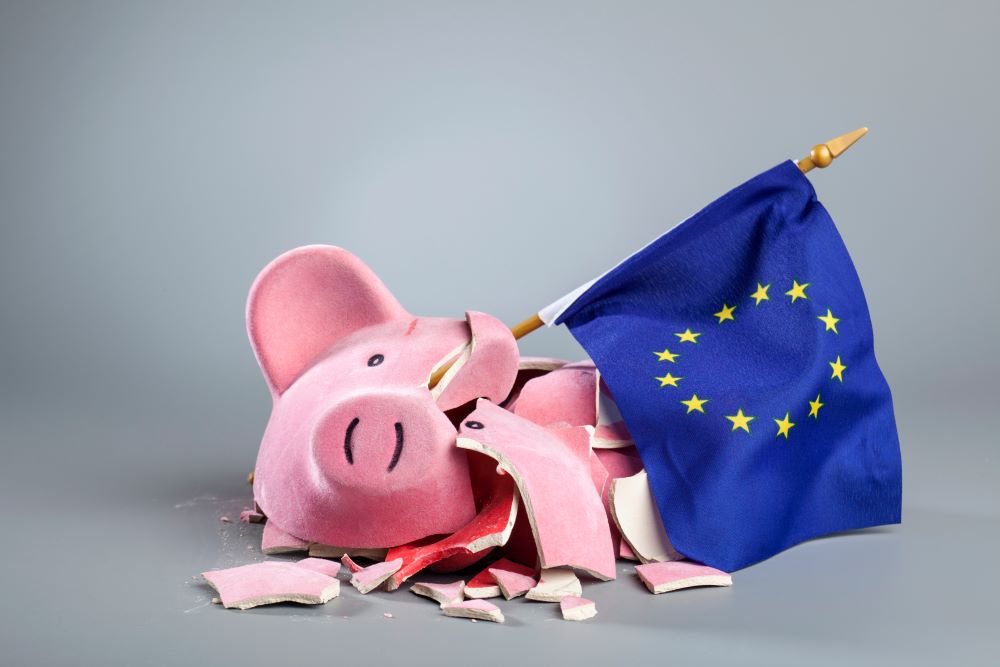
Unless properly structured, Europe’s tobacco and vapor tax plans may not achieve their public health objectives.
By Stefanie Rossel
The European Commission’s (EC) December 2022 proposal for an update to the 2011 EU tobacco excise directive came with a first: In addition to a significant hike in cigarette excise rates, the draft also calls for a bloc-wide vaping levy.
According to the proposal, the current minimum EU excise tax rate of €1.80 ($1.92) should increase to €3.60 per pack of 20 cigarettes. This would double excise duties in member states with low cigarette taxes (in eastern European countries, a pack of cigarettes can currently sell for under €3) and affect excise duties in countries such as Luxembourg and Austria, where cigarette prices are low relative to income. The EU hopes to generate an additional €9.3 billion in revenue from the tax harmonization, which would be a welcome windfall for pandemic-struck and inflation-struck member states. If enacted, the proposal would also increase taxes on hand-rolled tobacco.
E-cigarettes with less than 15 mg of nicotine per milliliter of liquid would attract a 20 percent excise duty, and stronger products would be subject to a duty of at least 40 percent. In the EU, nicotine content of e-liquids is limited to 20 mg per milliliter. According to the draft proposal, heated-tobacco products (HTPs) would attract a 55 percent excise duty, or a tax of €91 per 1,000 items sold.
The proposed legislation would harmonize the fragmented EU vapor market, where each member state taxes vapor and HTP products at its own rates. It is part of a push aimed at accelerating the reduction of smoking rates throughout the EU. As part of the common market’s Beating Cancer Plan, introduced by the EC in February 2021, health officials seek to lower the current EU smoking prevalence of 26 percent to 20 percent by 2025 and achieve a “tobacco-free generation”—that is, a smoking rate of below 5 percent—by 2040.
The draft was released only weeks after the EC imposed a ban on flavored HTPs to cut the growth in demand among younger consumers. Responses were mixed. While some argued that union-wide taxes are necessary because less harmful products still present risk, tobacco harm reduction advocates warned for unintended consequences.
Too High, Too Complex

“Simply increasing cigarette taxes is a blunt instrument when trying to reduce the health toll from cigarette smoking,” says David Sweanor, adjunct professor of law at the University of Ottawa in Canada. “It is far more powerful than other standard anti-smoking measures but has limitations and constraints that are often overlooked. Price sensitivity is real, but many people who smoke cigarettes will seek to deal with increased costs through access to contraband, the cross-border trade, simply changing the way they smoke without achieving health improvements, or further diminishing their overall well-being by redirecting expenditures from healthier purchases to the purchase of cigarettes.”
Taxing low-risk alternatives reduces the incentive to switch from cigarettes and can make illicit cigarettes more competitive, according to Sweanor. In his view, it is akin to making alcoholics who give up drinking by taking up jogging pay a tax on running shoes. “It misses the point of how taxes can be justified due to the relative health impact of certain behaviors,” he says.

Dustin Dahlmann, president of the Independent European Vape Alliance, believes that EU policy should be guided by scientific evidence. “Science around the world agrees that vaping is significantly less harmful than smoking,” he says. “E-cigarette taxes that are too high [to] prevent socially disadvantaged groups in particular from switching to e-cigarettes. In the first instance, there should not be excise duties for electronic cigarettes, as they are a means for smokers to switch to less harmful alternatives. If further harmonization of excise duties is considered, legislators should take into account the significant differences in risk profile between tobacco cigarettes and electronic cigarettes and apply the excise duties methodology accordingly, i.e., proportionality to the harm reduction benefits brought about by tobacco replacement products.”
In practice, this would mean a maximum excise duty of €1 per 10 mL or €0.10 per 1 mL of e-liquid, and it should be applied only to e-liquids with nicotine, according to Dahlmann. “The EU draft imposes a combination of an ad valorem and a specific volume base excise that would be an administrative burden for small and medium enterprises and fiscal authorities due to the additional complexity. Giving two options will lead to uncertainty, defeating the purpose of a harmonization of excise rates.”
Illicit Trade Could Increase
The question about how the EU’s revised tobacco tax directive would impact the illicit cigarette market is justified. The experience of France provides a cautionary tale. Following a tax increase of almost three times the EC’s minimum level, the illicit market in that country more than doubled, from 13.7 percent in 2017 to 29.4 percent in 2021, leading to an estimated loss of €6.2 billion in tax revenues in 2021, according to a KPMG report. In general, the study found, illicit consumption in the EU increased by 3.9 percent, or 1.3 billion cigarettes, in 2021, which corresponds to a loss of €10.4 billion in taxes.
How the suggested excise duty increase would impact markets with relatively low income and high smoking levels, such as Greece (42 percent smoking prevalence) and Bulgaria (38 percent), is anybody’s guess. “I have worked globally on illicit trade issues for decades,” says Sweanor. “There is much we can do to limit the trade, but the economics makes [illicit cigarette trade] so lucrative that it is hard to imagine bringing it under control so long as there remains a significant market for cigarettes. Markets meet needs, including illicitly. Cigarettes are extraordinarily inexpensive to make, and taxes and the huge profit margins of Big Tobacco create a business opportunity many people can be expected to see as a money spinner. The real answer is to facilitate disruptive technology that makes cigarettes as undesirable to consumers as unsanitary food or leaded petrol.”
To achieve the latter, the EC would have to acknowledge the harm reduction and smoking cessation potential of novel tobacco products. In February 2022, the EU Parliament became the world’s first elected chamber to endorse THR when it adopted a resolution on cancer prevention and treatment that notes that e-cigarettes “could allow some smokers to progressively quit smoking.” Dahlmann praised the move as a “landmark declaration” that would help reassure smokers of the benefits of switching to vaping. “All other EU institutions—and in particular the European Commission—should take this on board and ensure that policy follows science, not the other way around,” he said at the time.
Sweanor is less upbeat. “The taxation of low-risk products reflects an understanding of differential risks. But it fails to come to terms with the full magnitude of the harm from cigarette smoking and the enormous potential to dramatically reduce it. When we are looking at hundreds of thousands of annual deaths, surely it is a public health emergency—and policies should reflect that. Language such as “could allow some smokers…” and policies that limit the relative acceptability of low-risk alternatives indicate that the extent of the public health opportunity is not fully grasped.”
Differentiated Approach Required
Whether the EU is prepared to part ways with anti-novel nicotine product sentiment of the World Health Organization Framework Convention on Tobacco Control (FCTC), which the common market has ratified, remains to be seen.
“The EU is obligated to support tobacco harm reduction as a signatory to the WHO’s FCTC as stipulated in the introduction, article 1 (d) of the treaty,” says Dahlmann. “The FCTC requires the EU to not only allow reduced-risk products but to actively promote them. However, this definition is not actively supported by the WHO. The rule here is much more ‘quit or die.’”
“The WHO’s FCTC process has followed in the footsteps of narcotics protocols in being hijacked by ideologues who seek an abstinence-only approach on drugs where total abstinence is simply not a viable nor a humane goal,” Sweanor adds. “As with those narcotics protocols, caring governments that follow the Enlightenment principles of science, reason and humanism will either creatively skirt such guidelines or simply ignore them. This is something we are now seeing unfolding globally with cannabis policies.”
The goal of the new tax directive to create a smoke-free European society, he says, is noble and achievable—and far more quickly than envisioned in that 2040 goal. “But it requires bold rather than tentative steps. Policymakers should act in ways consistent with cigarette smoking being a public health crisis of enormous importance,” says Sweanor. “The best way to tackle this is by use of cross-elasticities, of empowering and facilitating people who smoke cigarettes to make healthier choices. This is accomplished by measures such as the widest possible cost differential between lethal cigarettes and low-risk alternatives. Given the horrendous death and disease tool from cigarettes, this should be a huge priority.”
“E-cigarettes need to remain accessible and affordable to smokers from all socioeconomic backgrounds who wish to quit smoking,” says Dahlmann. “E-cigarettes offer smokers an alternative that is 95 percent less harmful than smoking. Switching from tobacco to vapor has positive individual, social and economic implications and should be encouraged, not penalized by the tax system. If taxes make vaping more expensive than smoking, many smokers will lose an incentive to switch to the much less harmful alternative. We therefore would see no chance of achieving the EU’s ambitious goals.”
Before it is enshrined in law, the proposal will have to be agreed on by all EU member states. BAT already noted that this is merely the beginning of a long legislative process. “I assume there will be amendments, but we do not yet know their likely nature,” says Sweanor. “The proposal could be changed to help facilitate a rapid public health breakthrough as people abandon lethal cigarettes in huge numbers. Or it could be amended to make that a pipe dream.”
This article first appeared in Vapor Voice‘s sister publication Tobacco Reporter.


